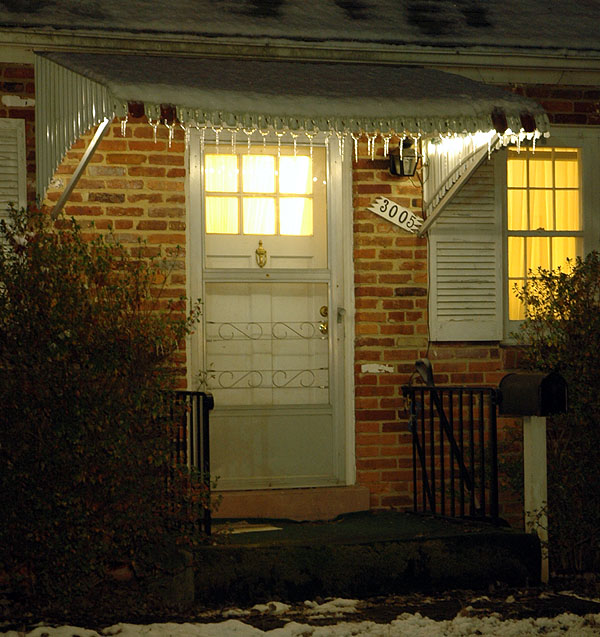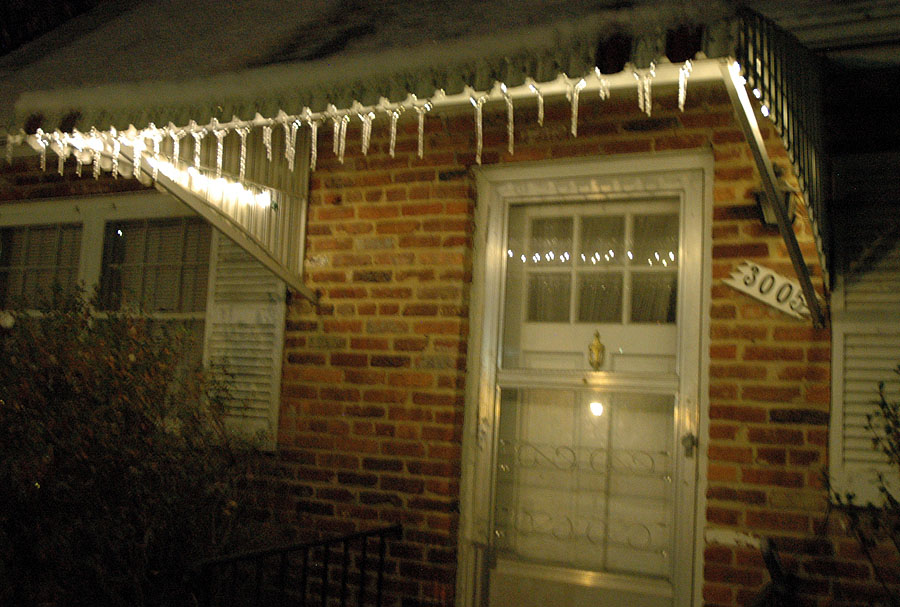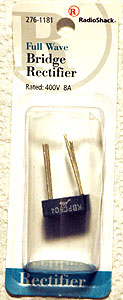
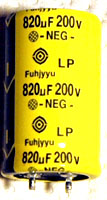 First project: full wave rectified string, smoothed
with a capacitor. December 2009.
First project: full wave rectified string, smoothed
with a capacitor. December 2009.
 First project: full wave rectified string, smoothed
with a capacitor. December 2009.
First project: full wave rectified string, smoothed
with a capacitor. December 2009.
Start with:
Bridge Rectifier rated at least 400V. Turns the negative half of the 120 VAC sine wave positive. First step in turning AC to DC. With it we'll get 0 to 168 volt peaks 120 times per second.
Smoothing Capacitor at least 100uF, 200V. Charges while the AC voltage increases. Then powers the LEDs while the AC voltage drops to zero and comes back up.
Generic Target warm white LED christmas light set
Some equations:
Volts = Amps x Ohms Watts = Volts x Amps RippleVoltage = Amps * TimeBetweenPeaks / Farads
Tiny voltage increases supplying LEDs significantly change the current. Including a resistor in series with the LEDs slows the current change to linear. The resistor packs from the Target LED light set are 750 ohms each. We'll keep one to protect the LEDs against current spikes.
120 volts is the "root mean square" value of typical AC house power in the US. That means it does the "equivalent work" of 120 volts DC. The acual sine wave form varies between +120xSQRT(2) to -120xSQRT(2). 120 x the square root of 2 is just under 170 volts. The bridge rectifier will lose a couple of volts yielding about 168 volts at the peak.
The LEDs from the christmas tree sets generally like to be driven at 20mA of current. So, that's our target. I extracted an 820uF capacitor from an old PC power supply I had. The 200 volt rating is satisfactory for our 168 volt circuit. 20mA = 0.02A. With a bridge rectifier there are 120 peaks per second, so time = 1/120 = 0.0083 seconds. 820 microfarads (uF) = 0.00082F. Ripple = 0.02A * 0.0083s / 0.00082F = 0.2 volts. So, with the nice big capacitor our 168 volt supply will wobble by a barely perceptible fifth of a volt when the current draw is 20 mA.
According to Linear's LED array wizard, 46 LEDs will put me around 20 mA with the resistor I have. So here's what I'll wire up:

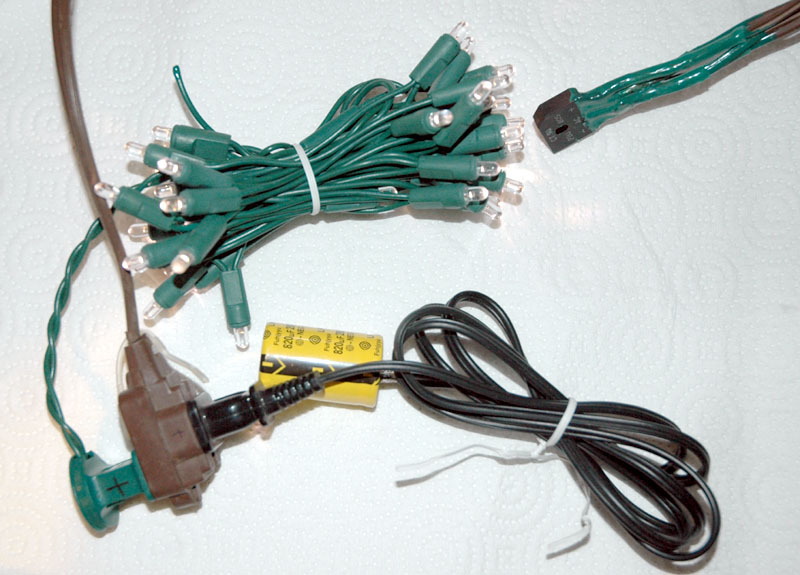
Followup 12/2012: Make it easy to find and replace bad bulbs by connecting a 47KOhm resistor in parallel with each LED. It's a lot of work soldering all those resistors but then when a bulb fails the rest of the string goes dim instead of going out. The bulb that went out is then trivial to spot. In normal operation, the high-ohm resistors waste less than a tenth of a percent of the electricity entering the string, a reasonable trade off for easily finding burnt-out bulbs.
I used a Sylvania light set as an accent light for the picture over my fireplace mantle. Just stapled the lights to the inside of the wood piece at the top and plugged them in. Easy as pie.
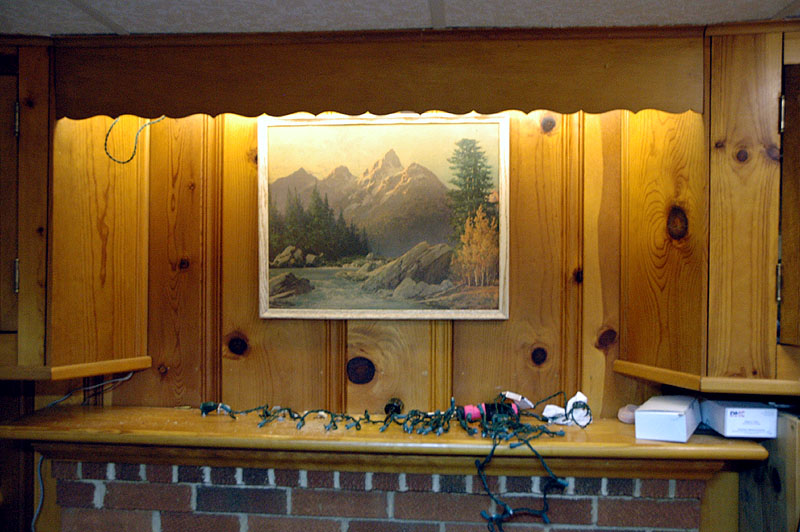
Took a standard 2' x 2' drop ceiling panel. Put two unmodified Target warm white LED christmas light sets through it organized in 8 rows of 15 LEDs spaced 1 1/4" apart.
One trick to it: these are half-wave rectified sets so the bulbs will flicker on and off at 60Hz. However, the first 30 LEDs flicker on the first half of the cycle while the second 30 LEDs flicker on the second half of the cycle. So, organize the LEDs where each adjacent LED is from the opposite set of 30. Each bulb will still flicker at 60Hz but the light from any general area of the glow panel will flicker at an imperceptible 120Hz.
Consumes 9.6 watts of electricity and gives off about the same light as a 40 watt light bulb. Lights up the dark corner by my basement book shelves just fine. I can now read the titles!
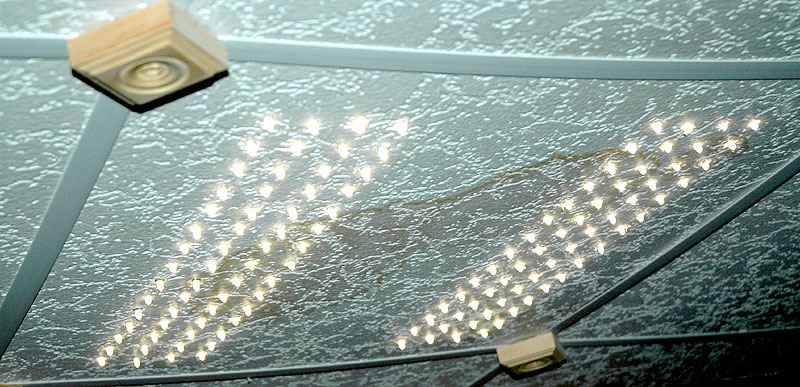
December 2009: I made some changes and integrated the 46-led strings and the rectifier/capacitor from my experiment above. The results give a nice steady warm white light that replaces a regular lamp and really lights up a previously-dark corner of the basement.
Update: November 2010: the brightness and exact color of these bulbs has changed after a year. I had one bulb I thought was burning out. It got very dim, but weeks later it inexplicably got bright again. The difference in brightness is not noticable unless you look for it. So, that's 11 46-bulb strings, one year and no burnouts (but one weird bulb).
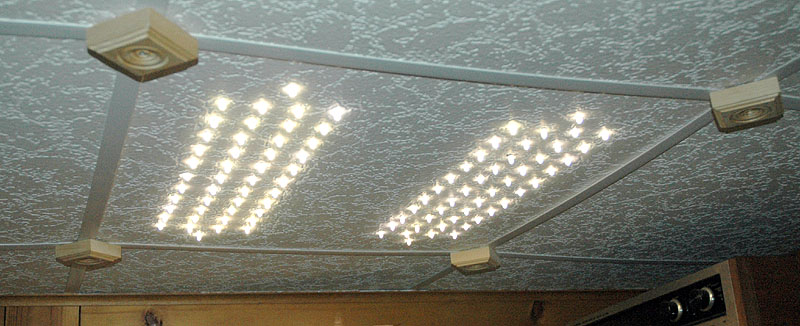
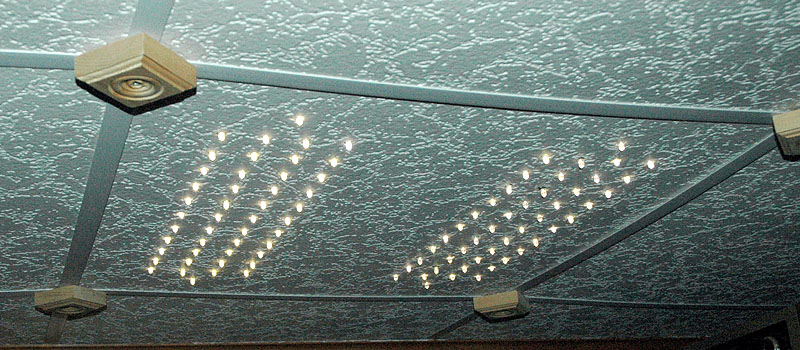
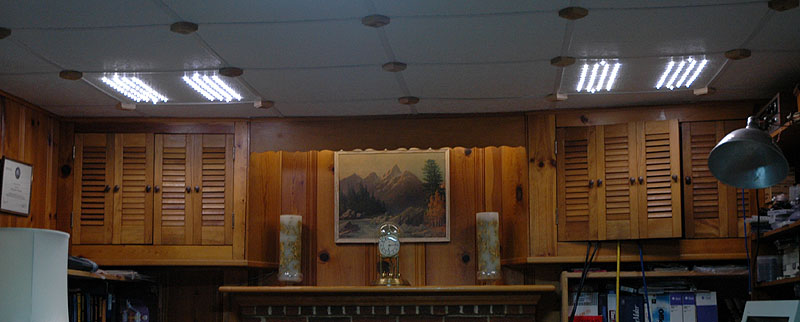
December 2009: Made from one string of Sylvania warm white LED lights. I filled the sockets with dielectric grease to prevent the LED leads from rusting.
Followup November 2010: I replaced one burnt out bulb. It burnt closed (current flowed) so I didn't have to hunt for it. This set has been satisfactory and the dielctric grease did its job of preventing rust. Also, I'm adding a second string; 50 LEDs isn't really bright enough for a porch light. If I had it to do over, I think I would start with an Ecosmart set instead.
